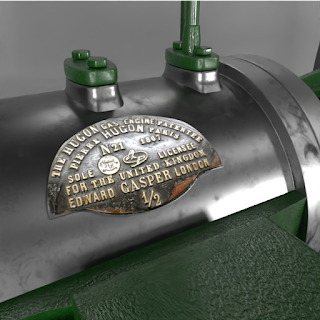On display at the Malahide Castle, County Dublin, Ireland, are the frame and movement of the mid-eighteenth century turret clock that originally ran the clock and sounded the bell in the bell tower of the Archway to the Russborough House, County Wicklow. In this century, Julian Cosby, a clock restorer, reassembled the jumbled parts from a cardboard box and it was cleaned and polished by the Russborough blacksmith, Michael Canlan. The clock works are known as a “side-by-side bird cage” clock due the wrought iron frame and two parallel gear trains, one for operating the hands of the clock and the other for ringing the bell.
The chiming train governs the ringing of the bell on the hour with a number chimes corresponding to the hour. Much of this mechanism is missing from reassembled clock. To build this model many photos and videos of other clocks of similar design and age were consulted. Accordingly, some of the details of parts and their arrangement may not exactly resemble the original, but their function is faithful to the original Russborough clock.
My thanks to Bill Anderson for sending me his photos of the clock. If you’d like more detailed information about the design and operation of clocks of this type, let me know and I’ll provide some links to sources that that helped me to understand them.
#Turret #tower #clock #Russborough #Blender #Cycles

















































